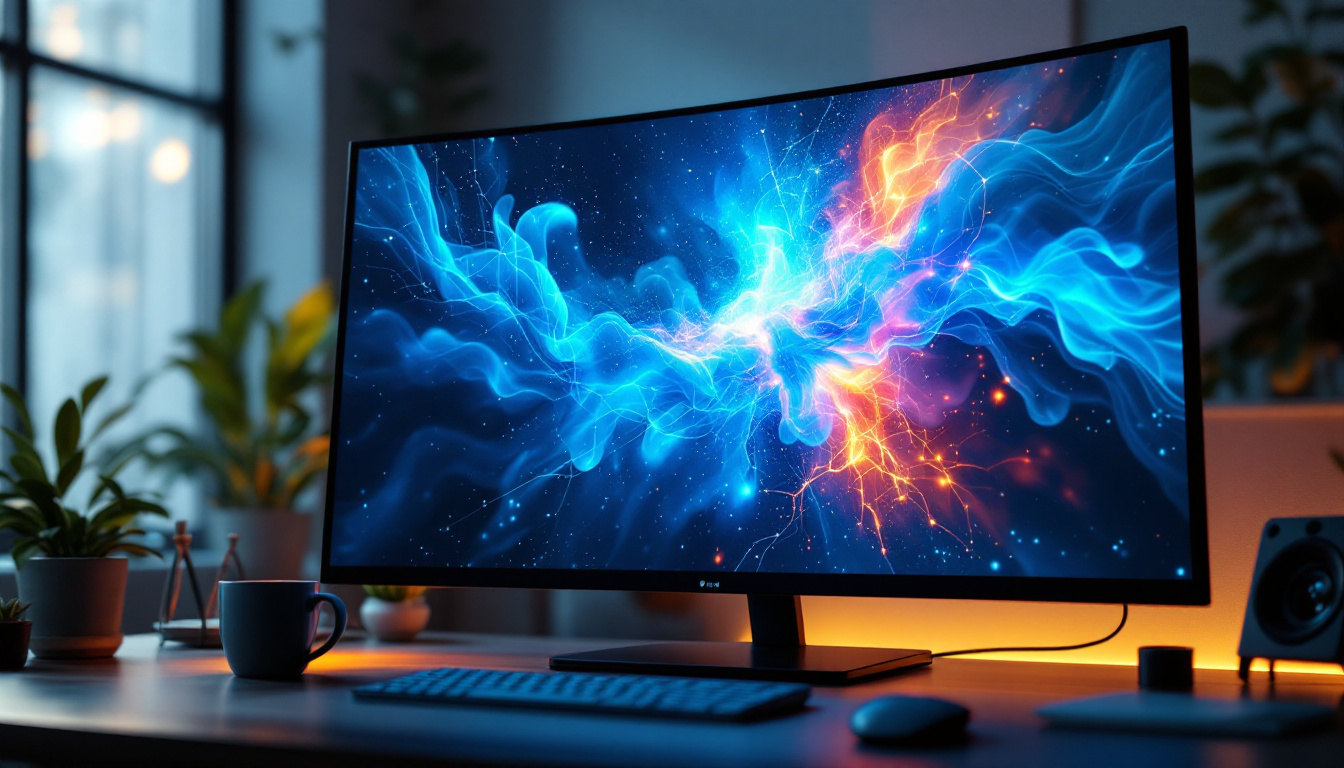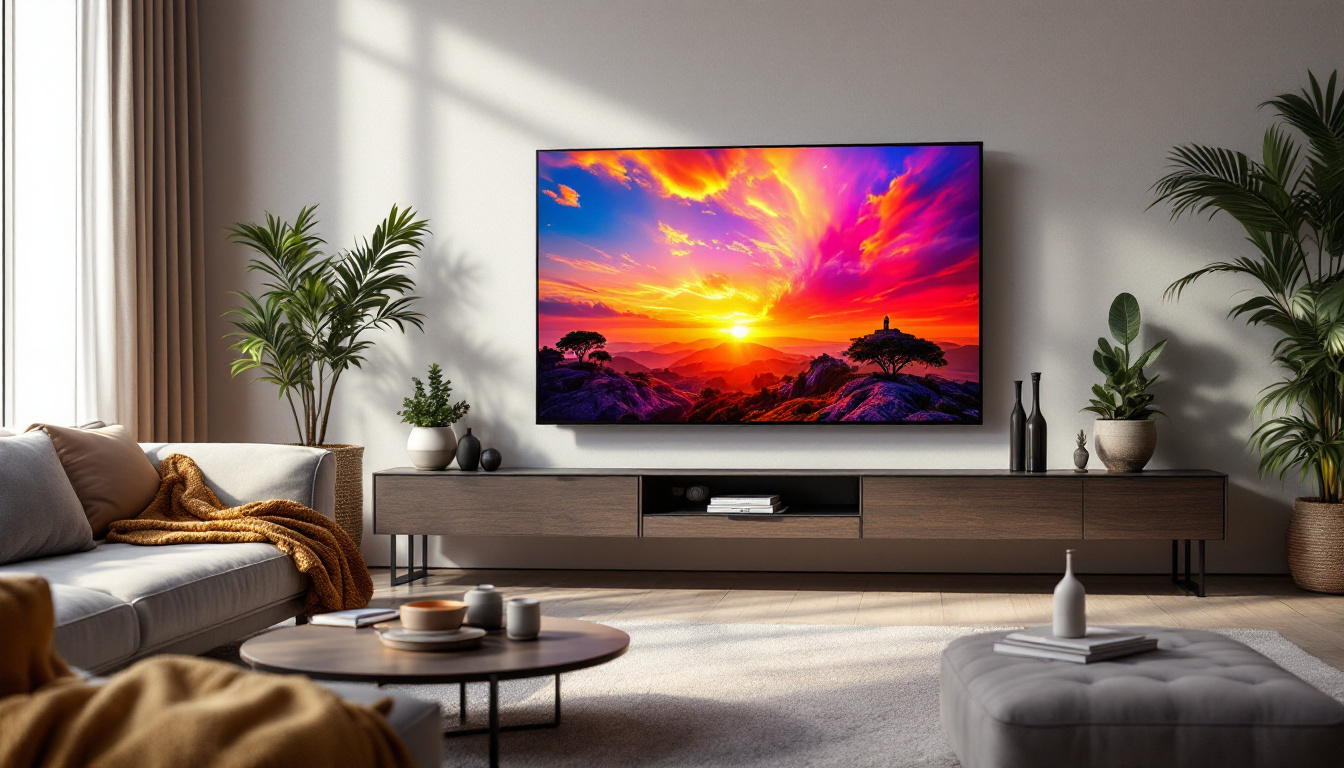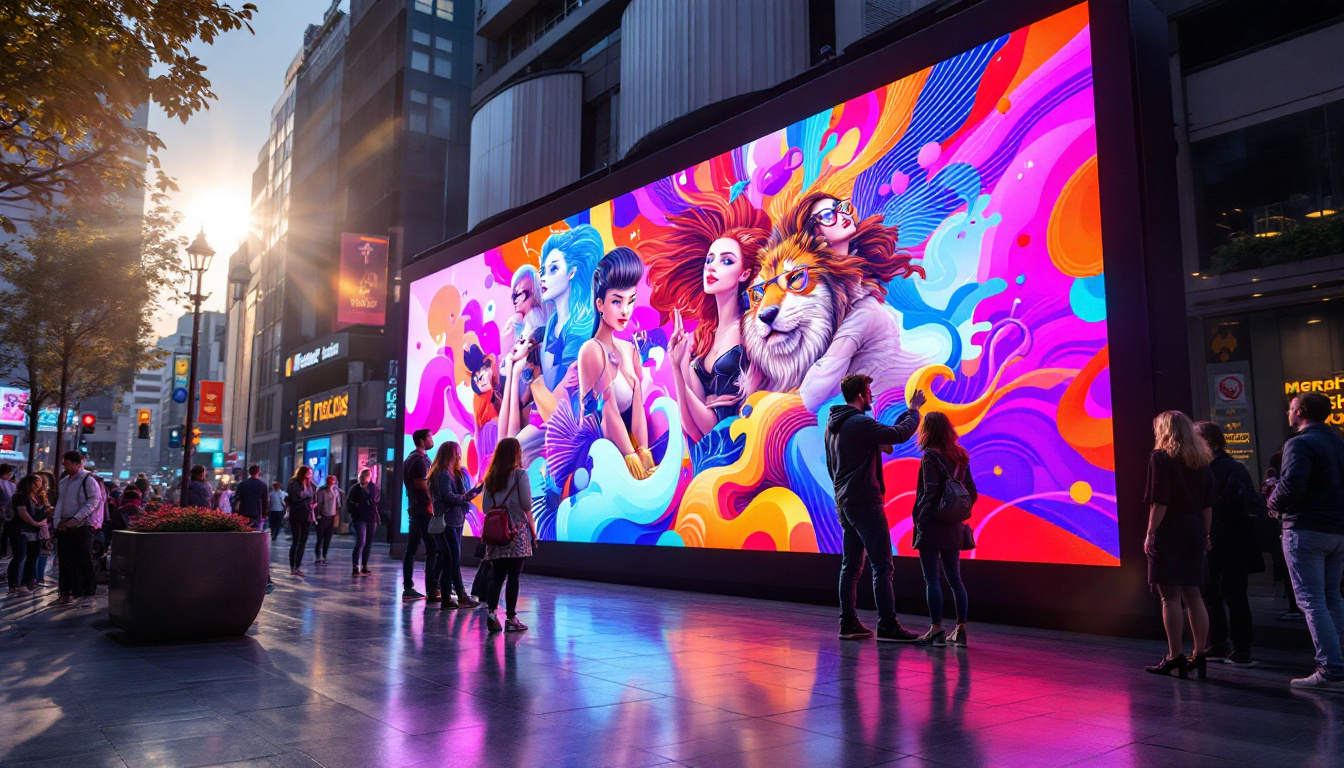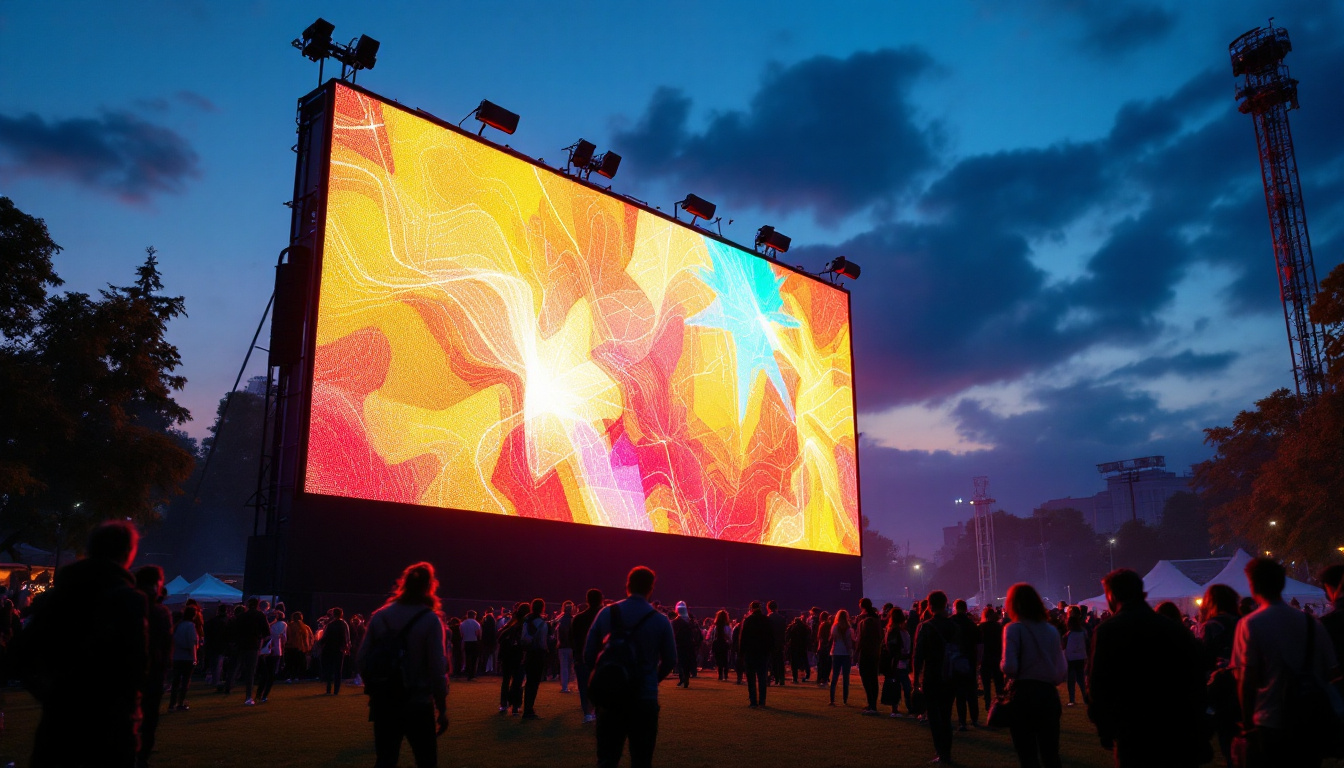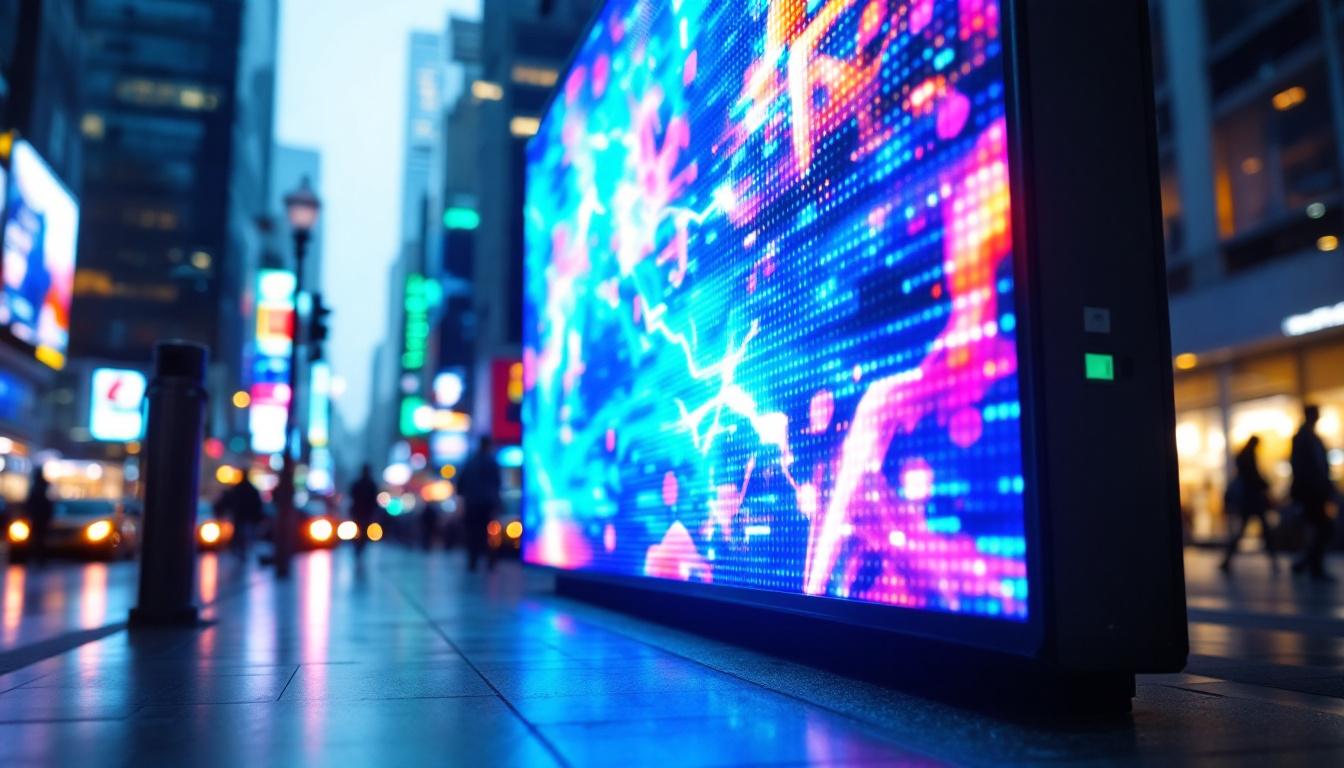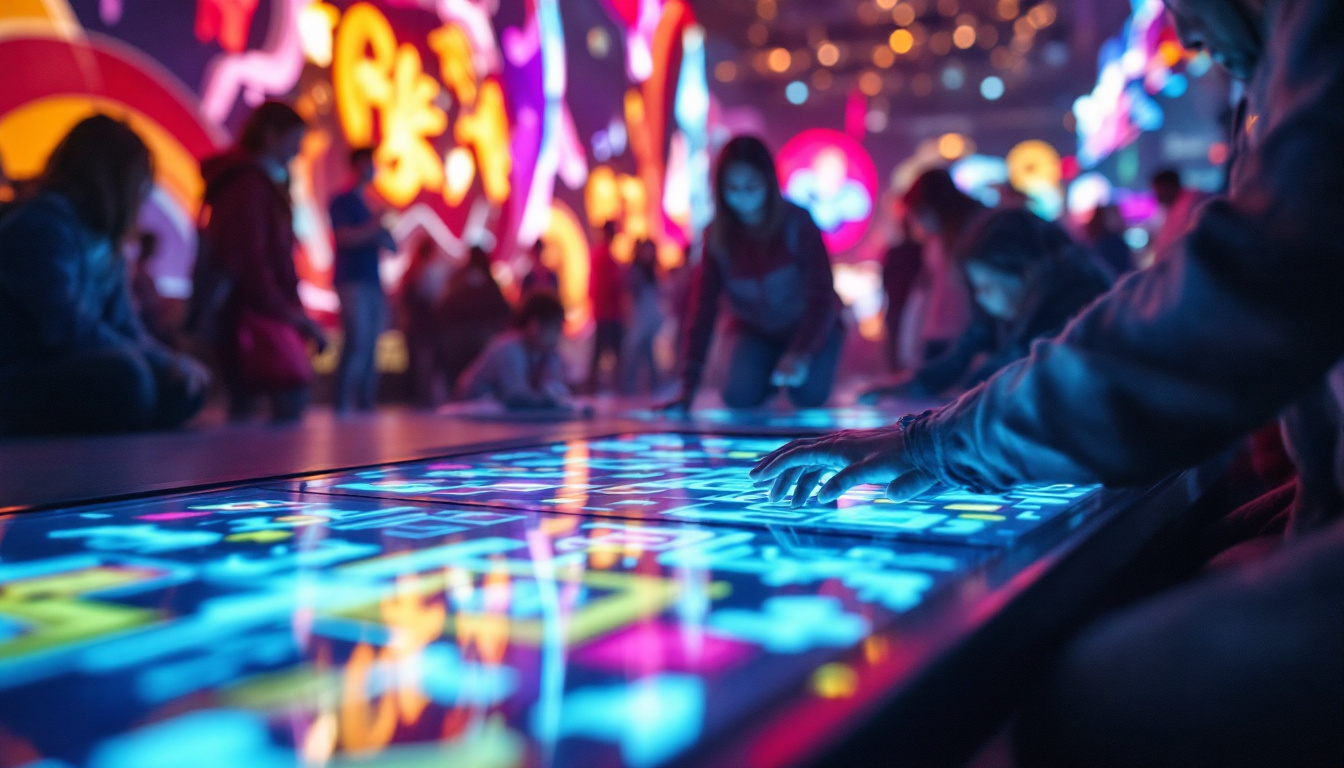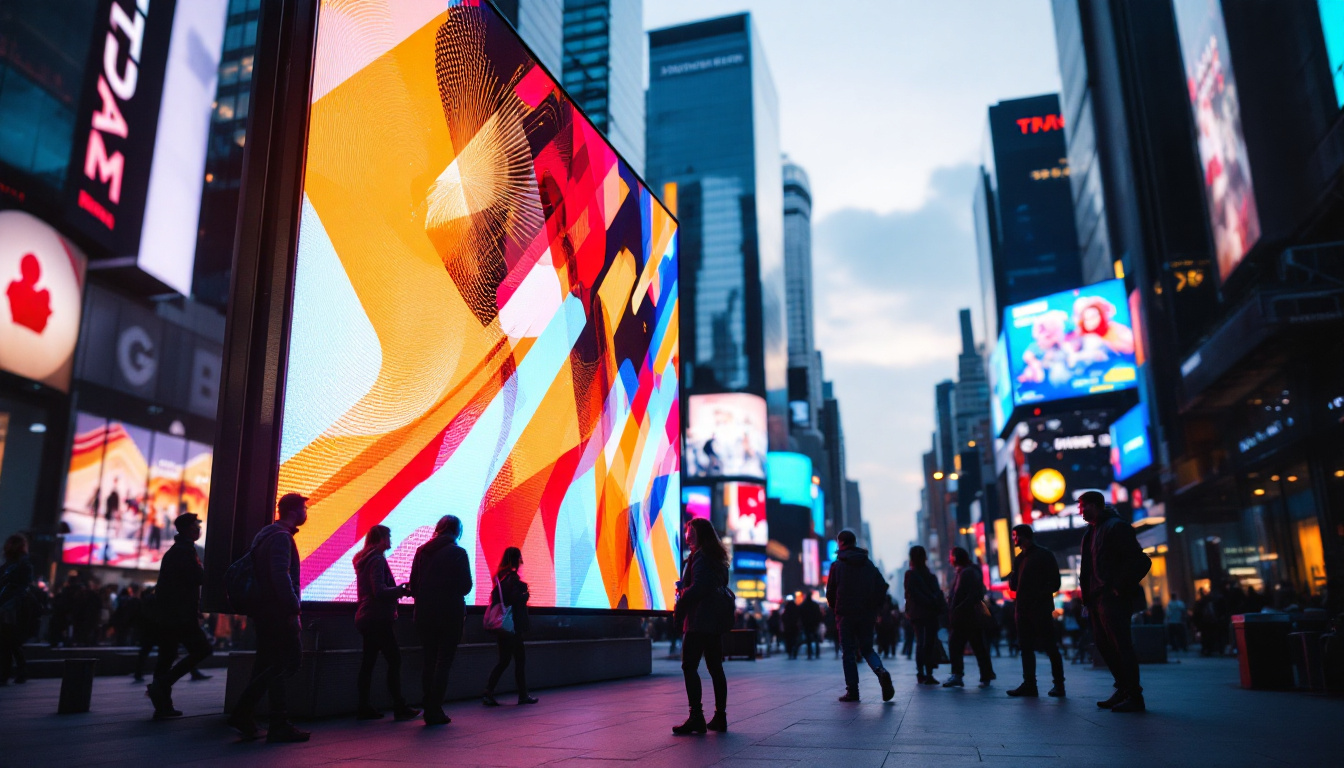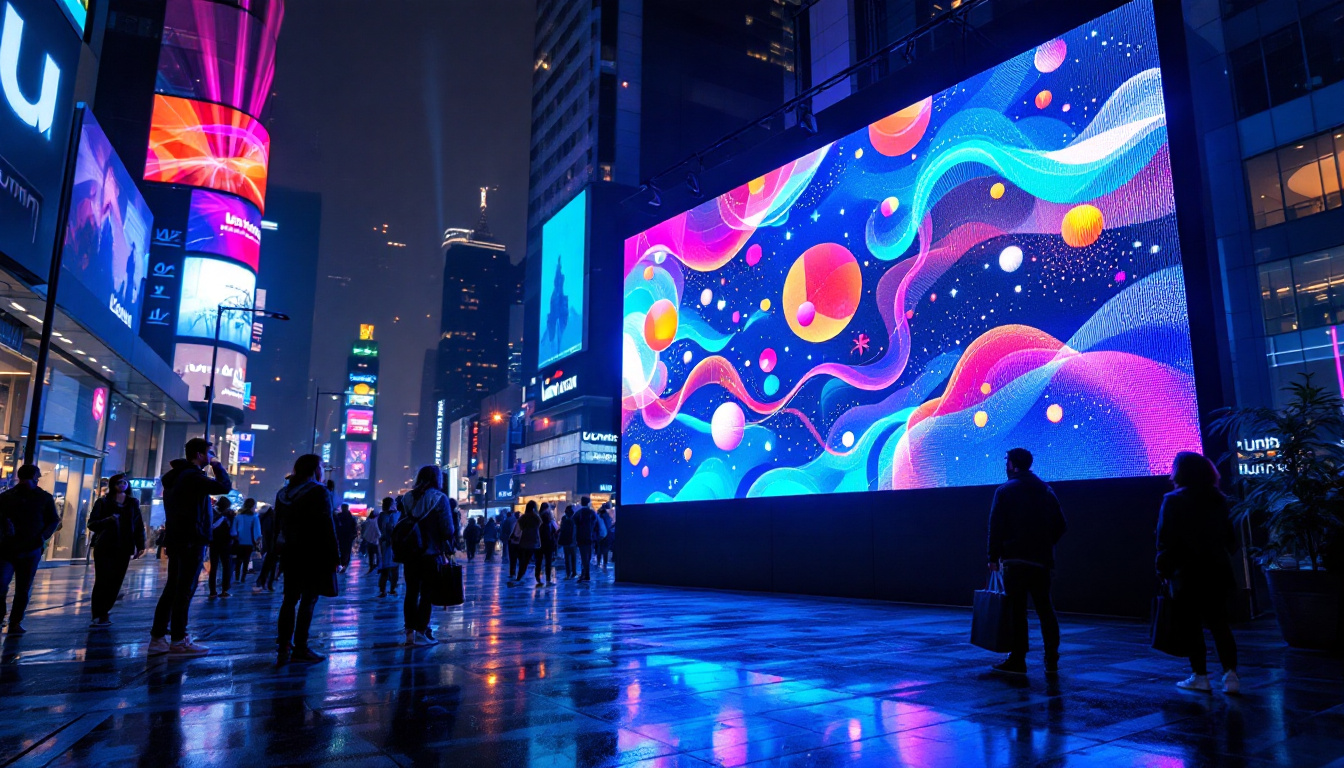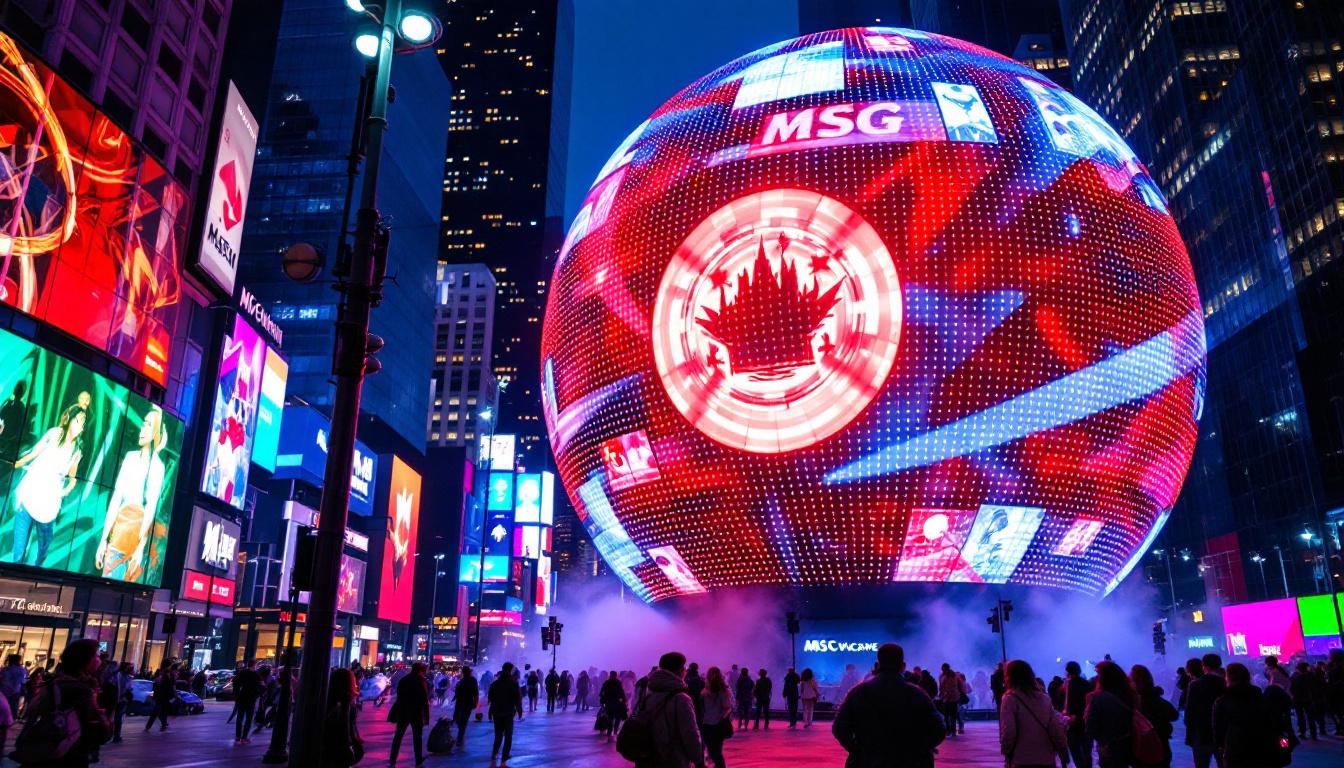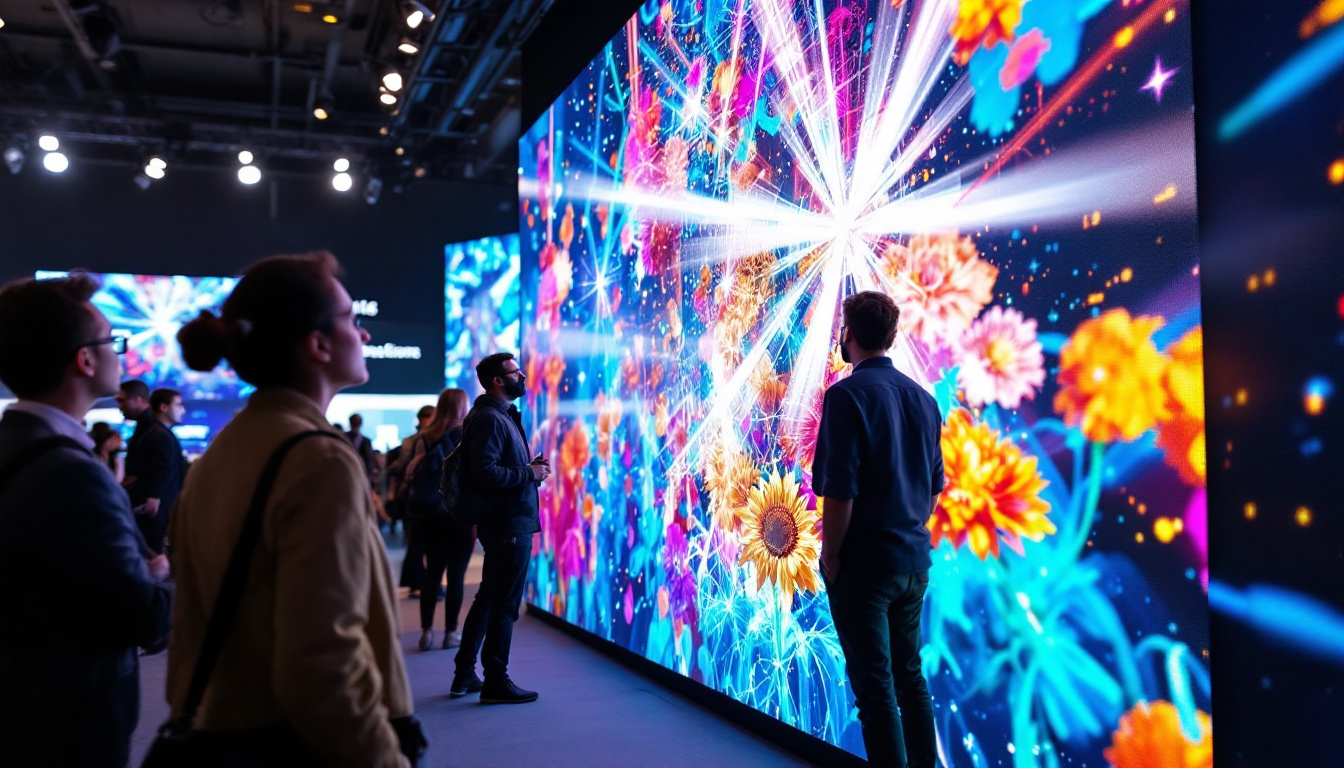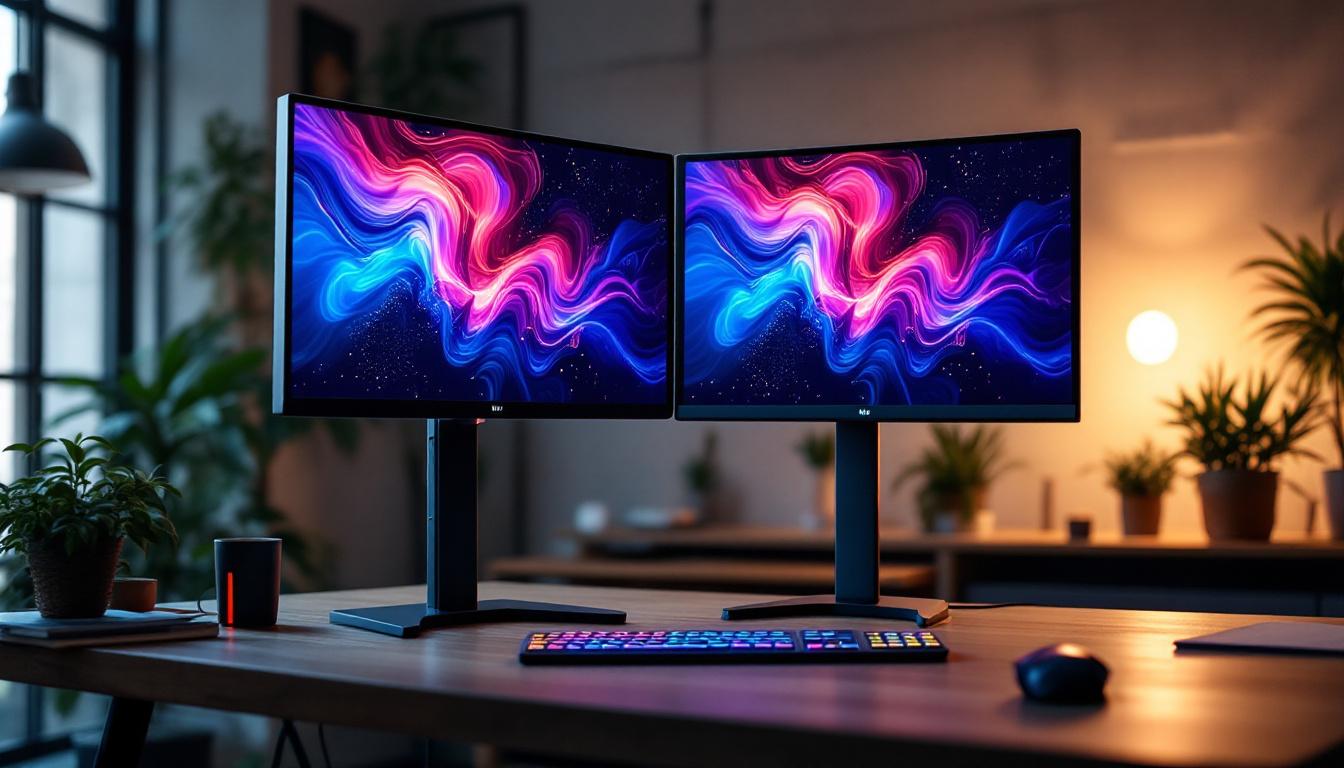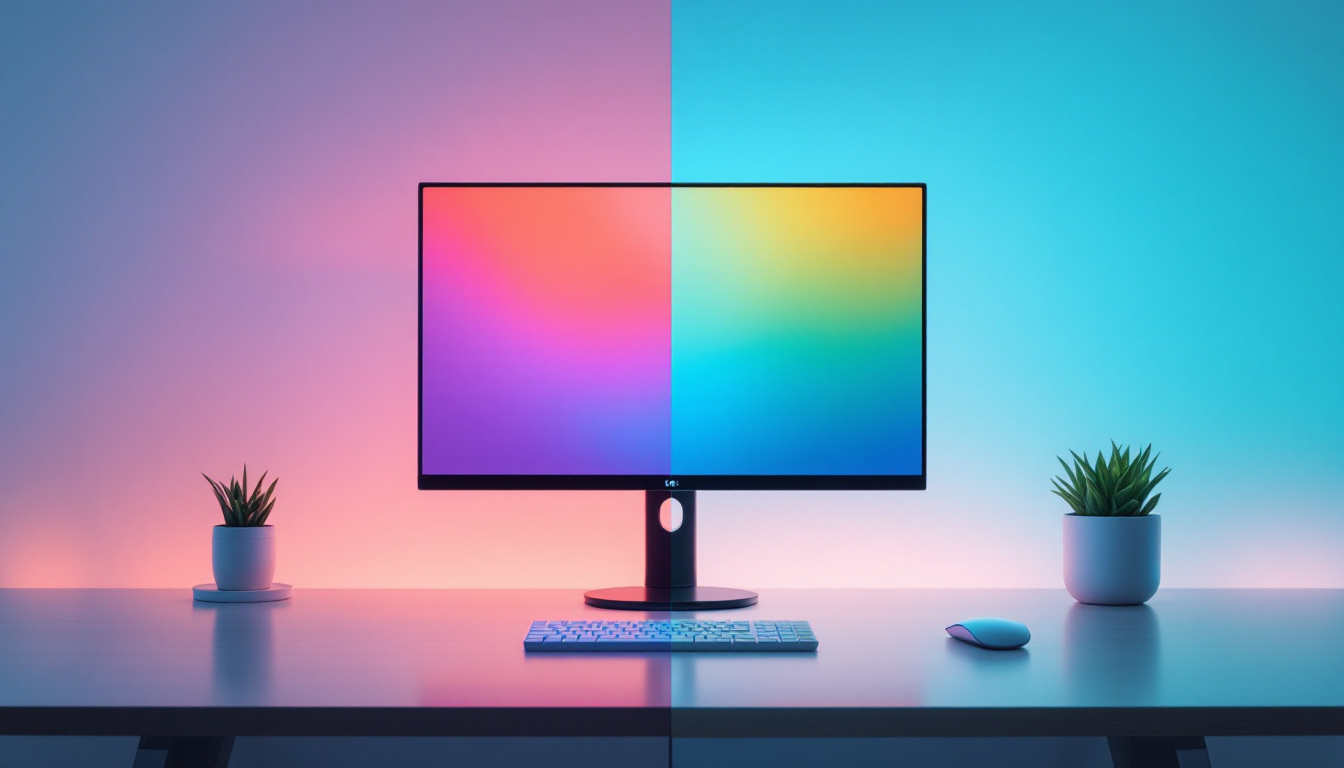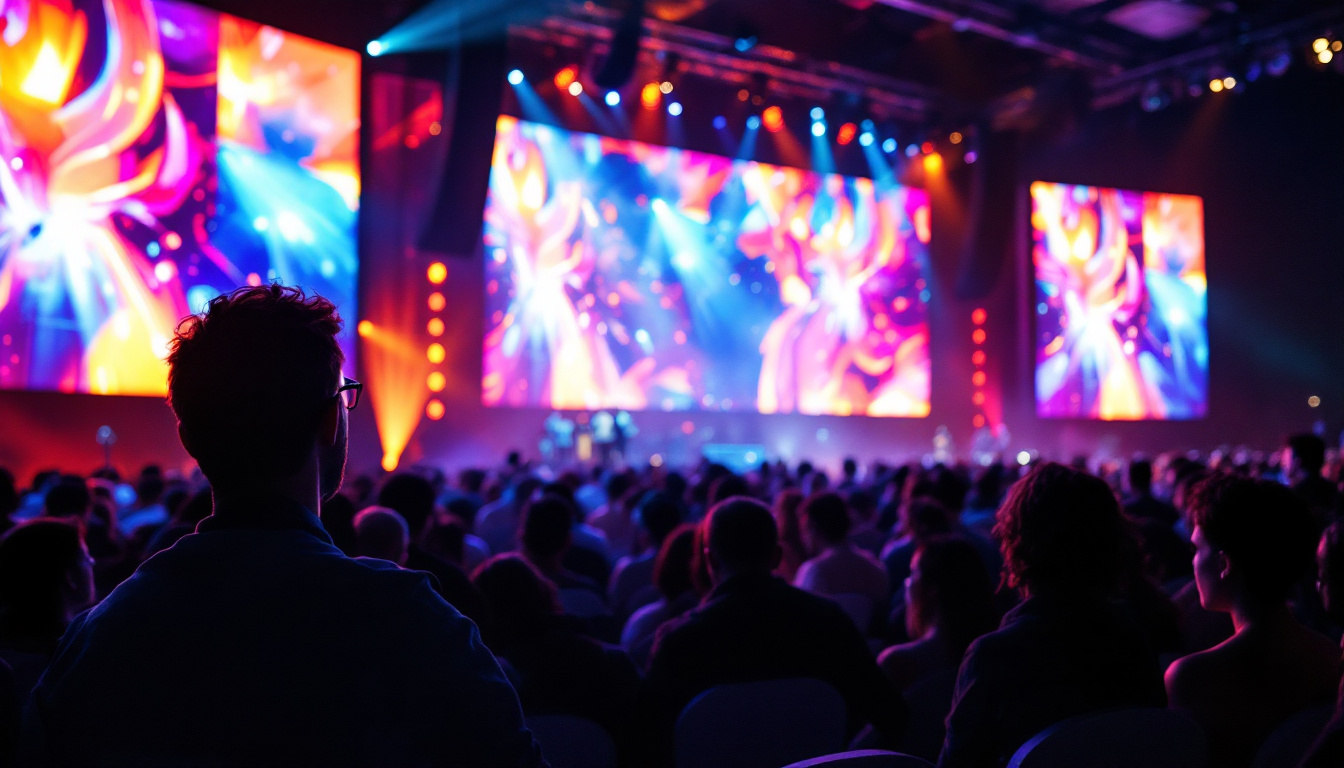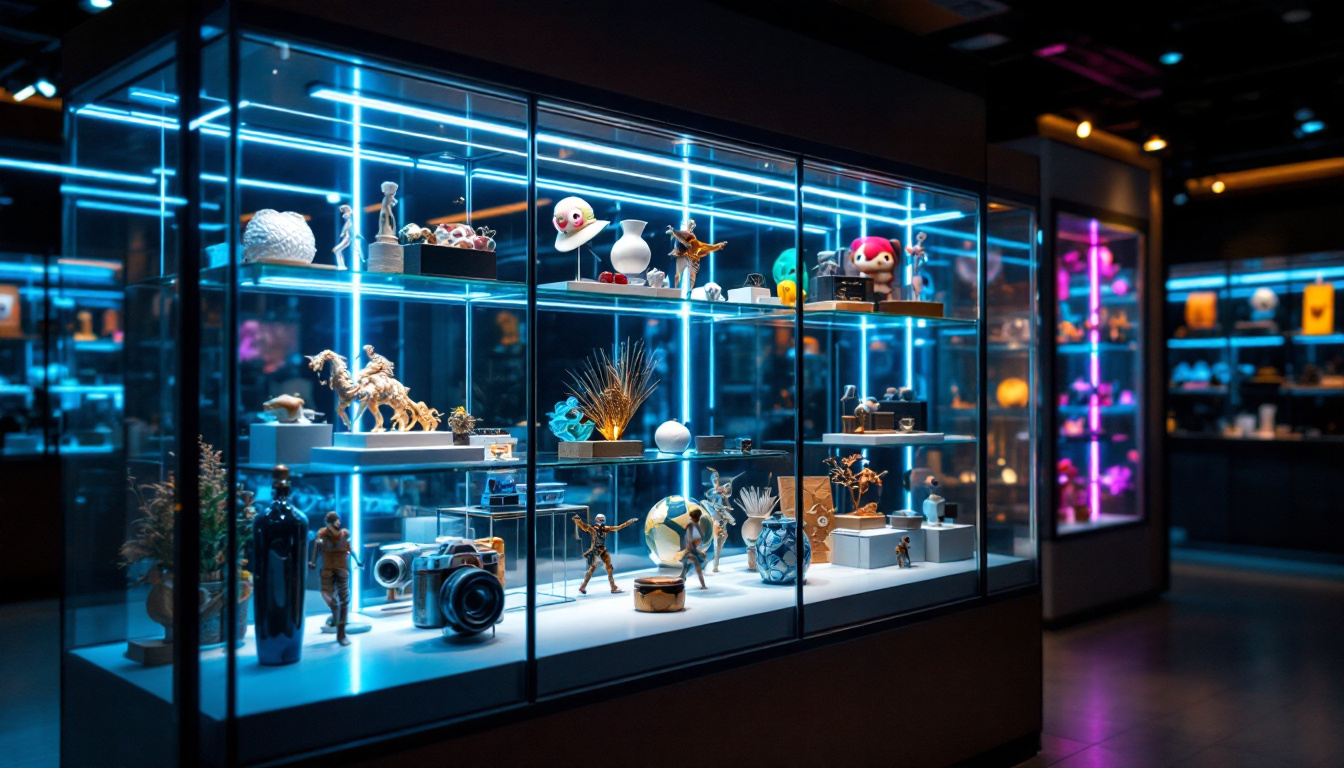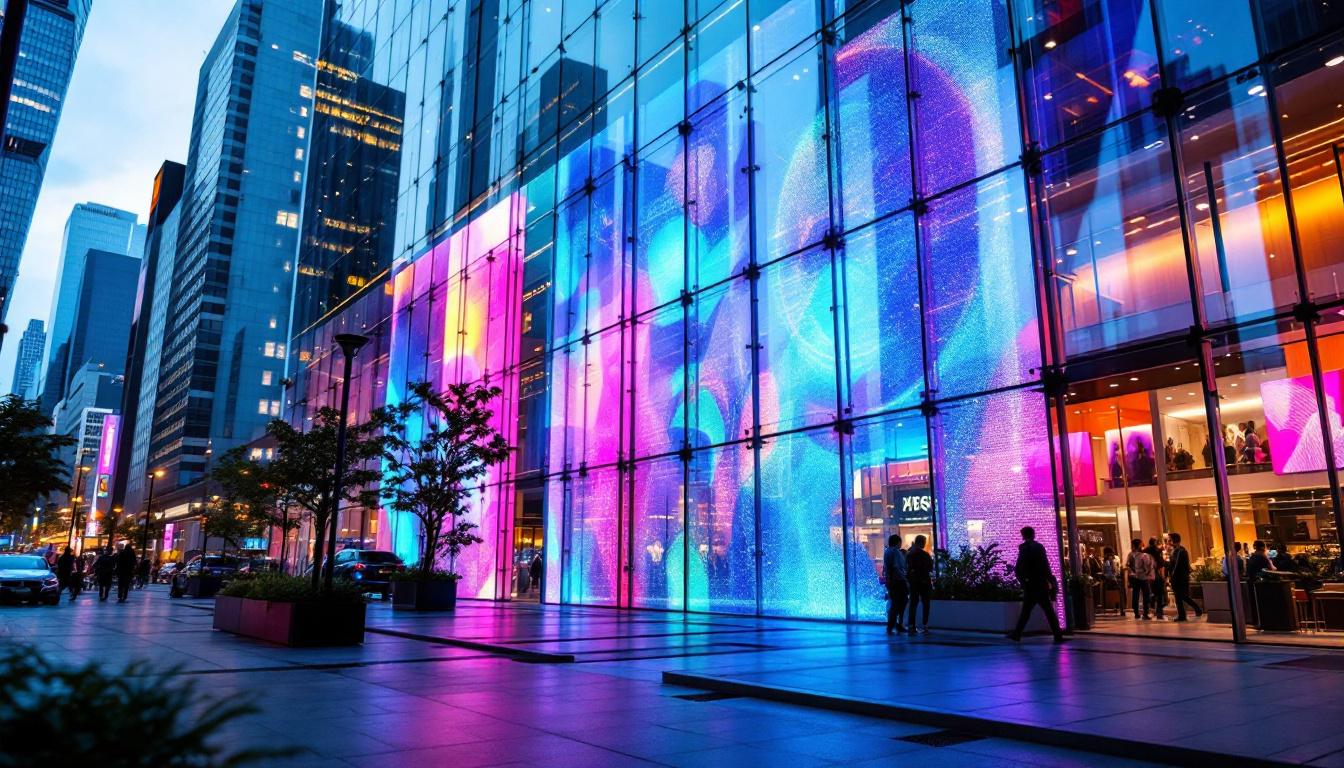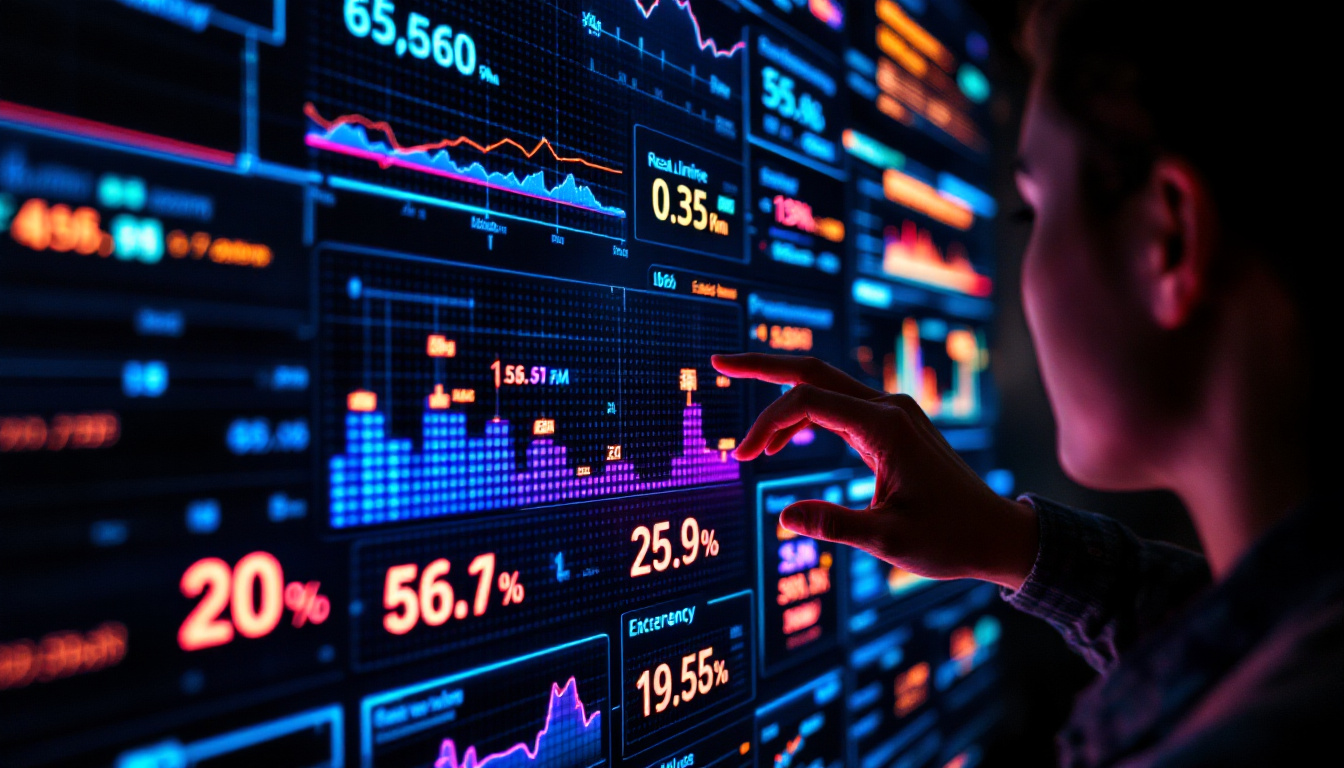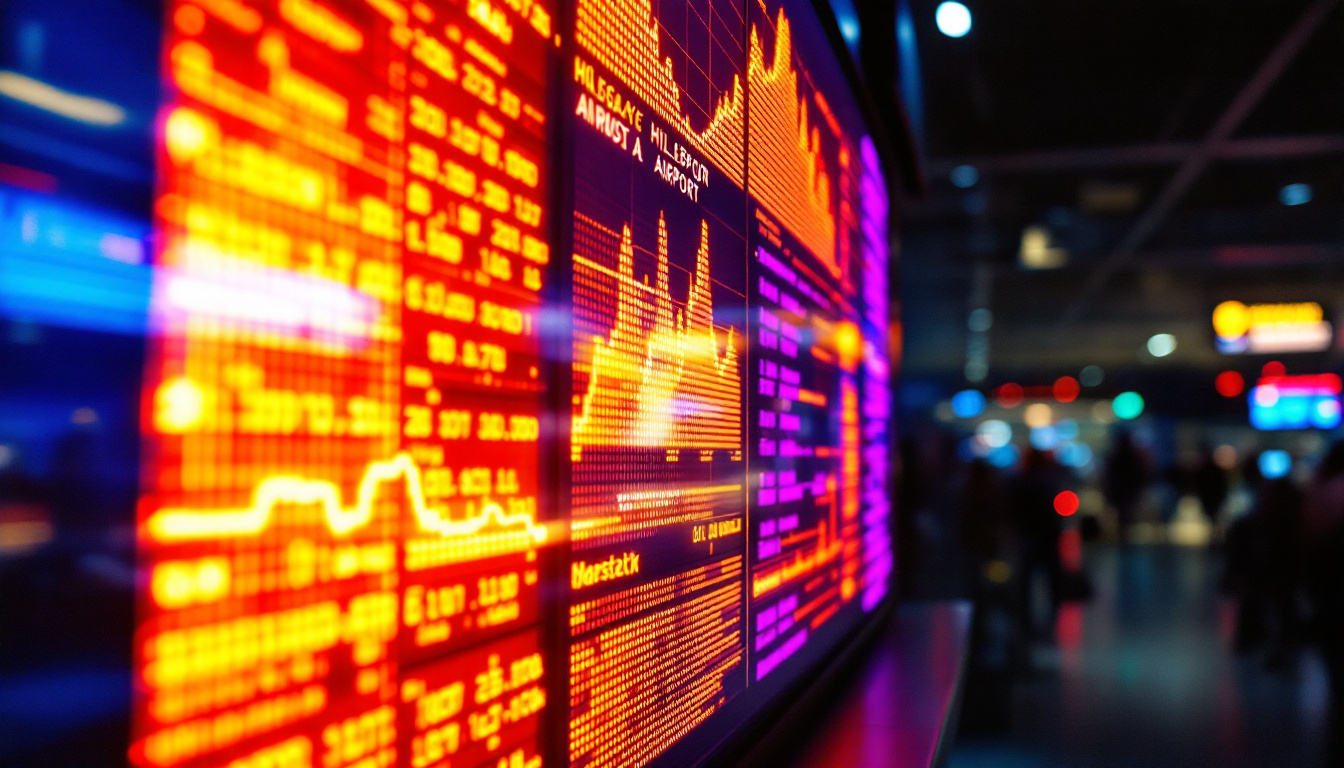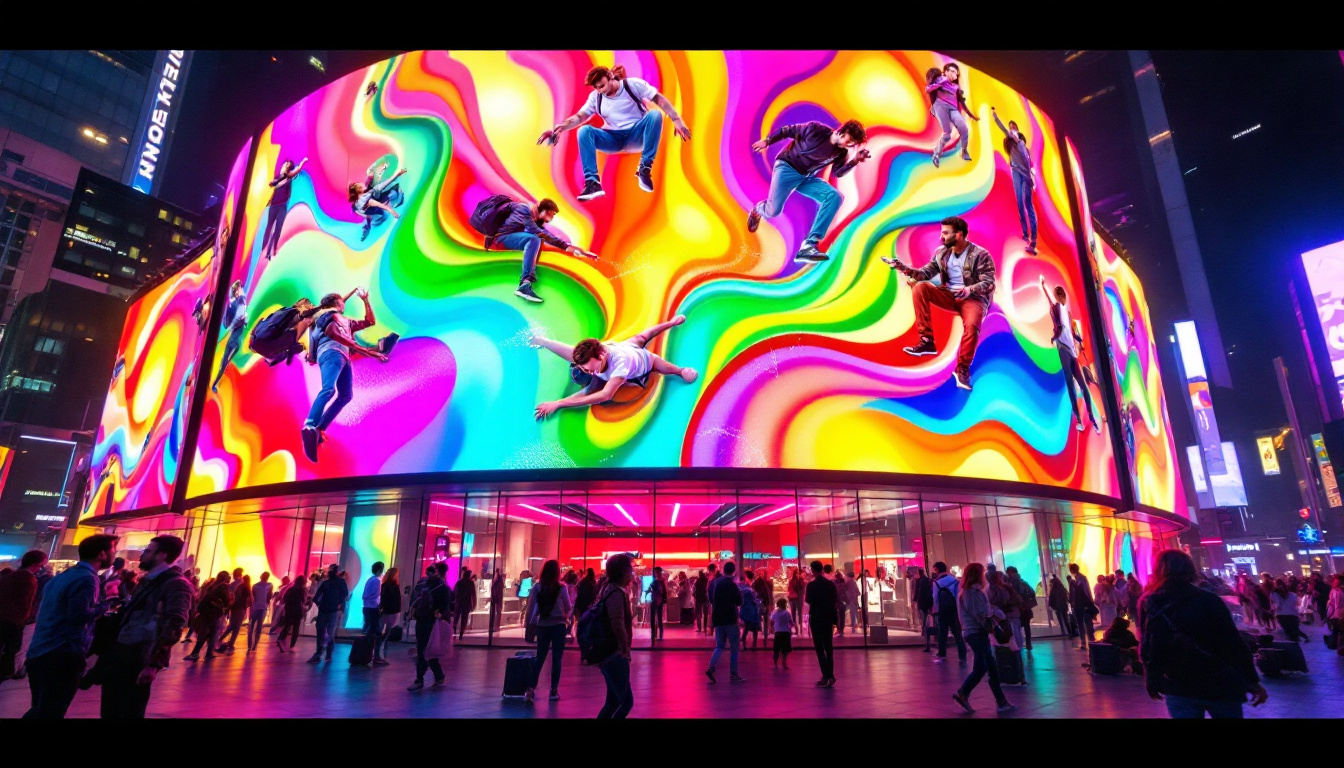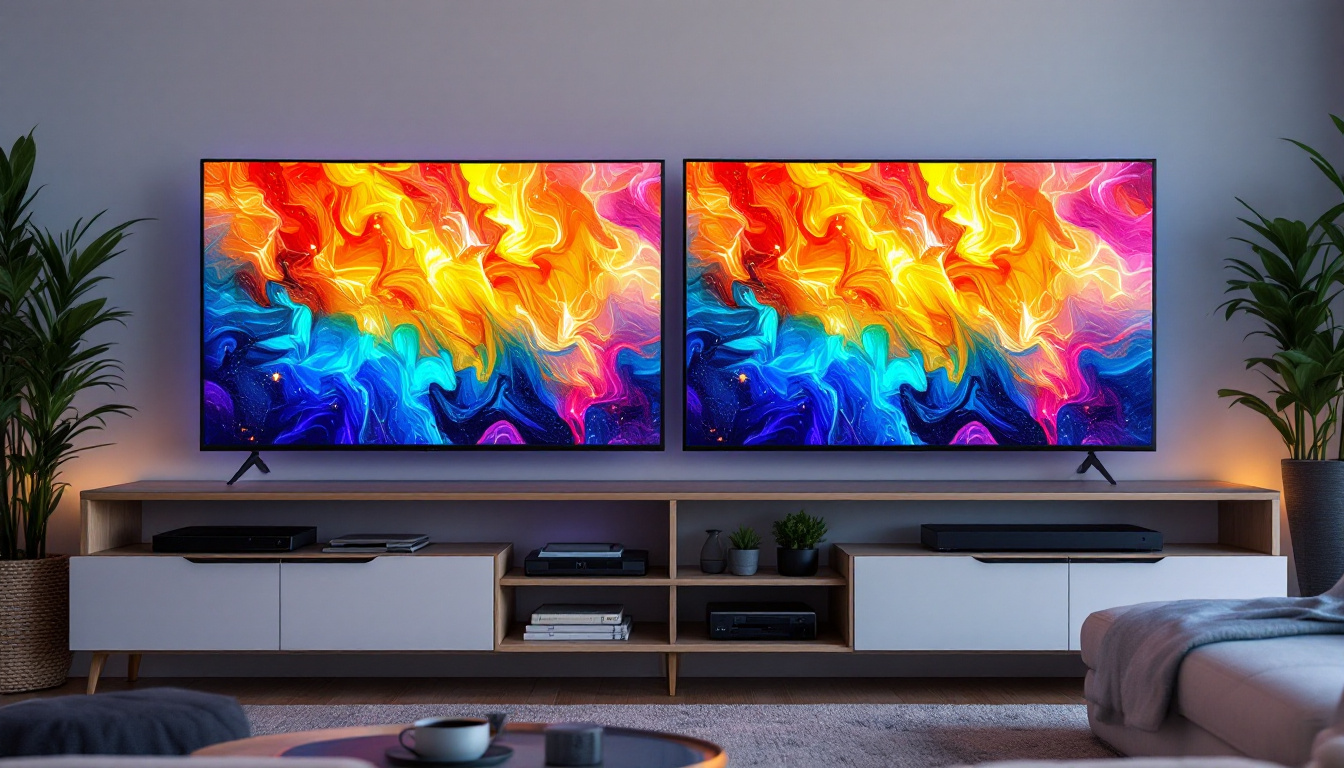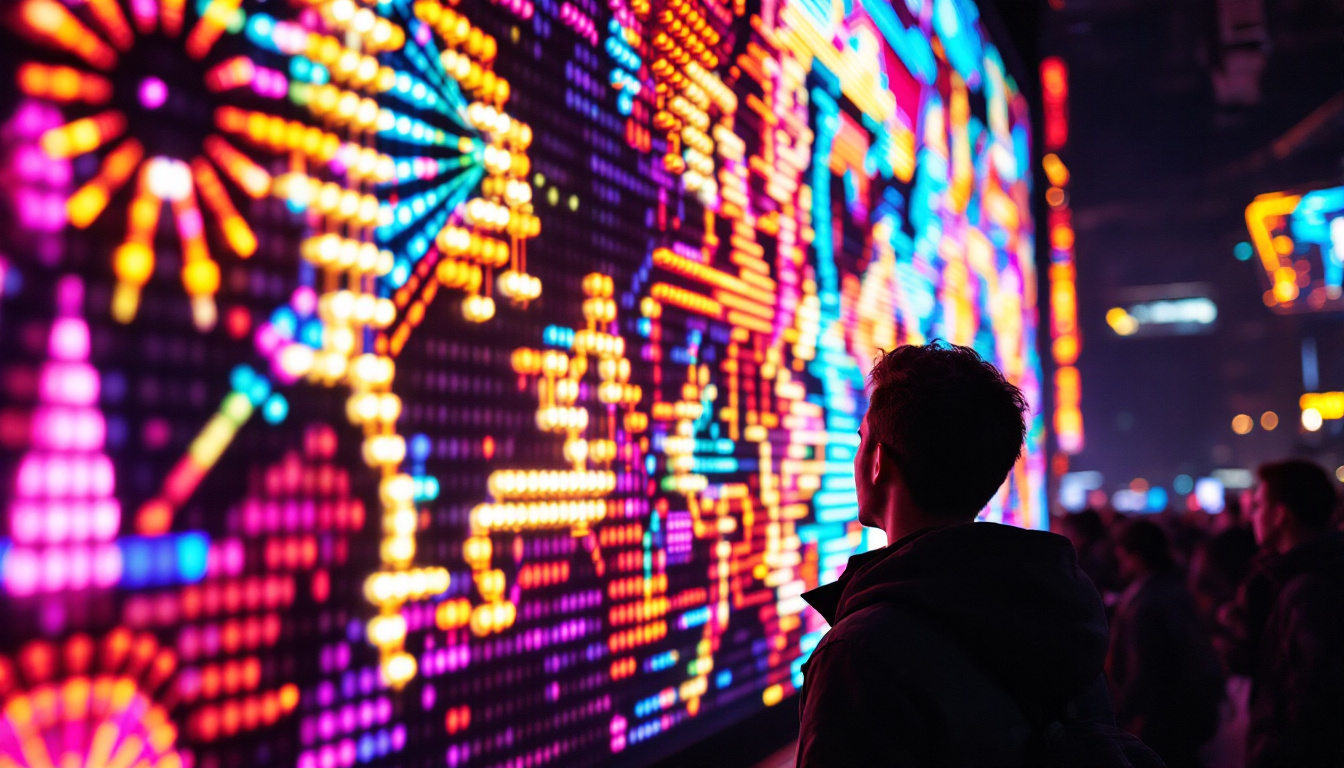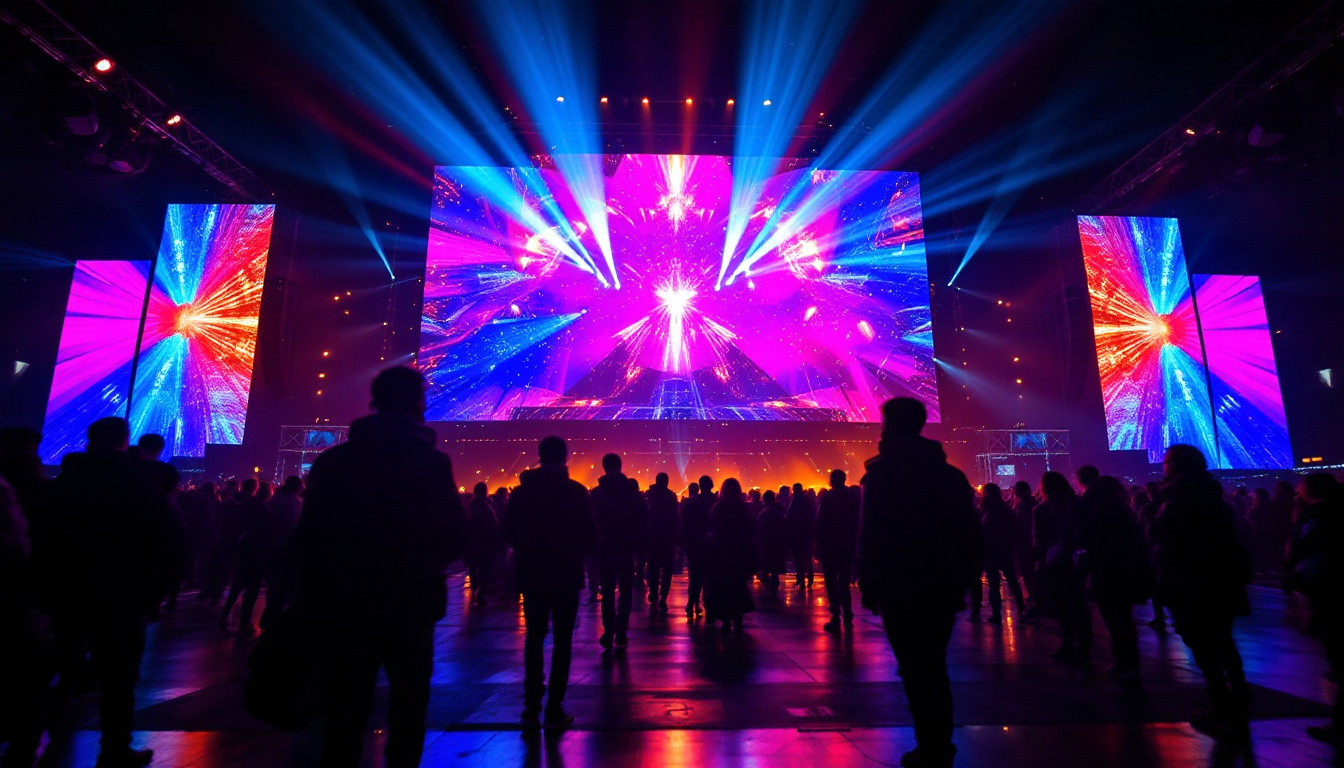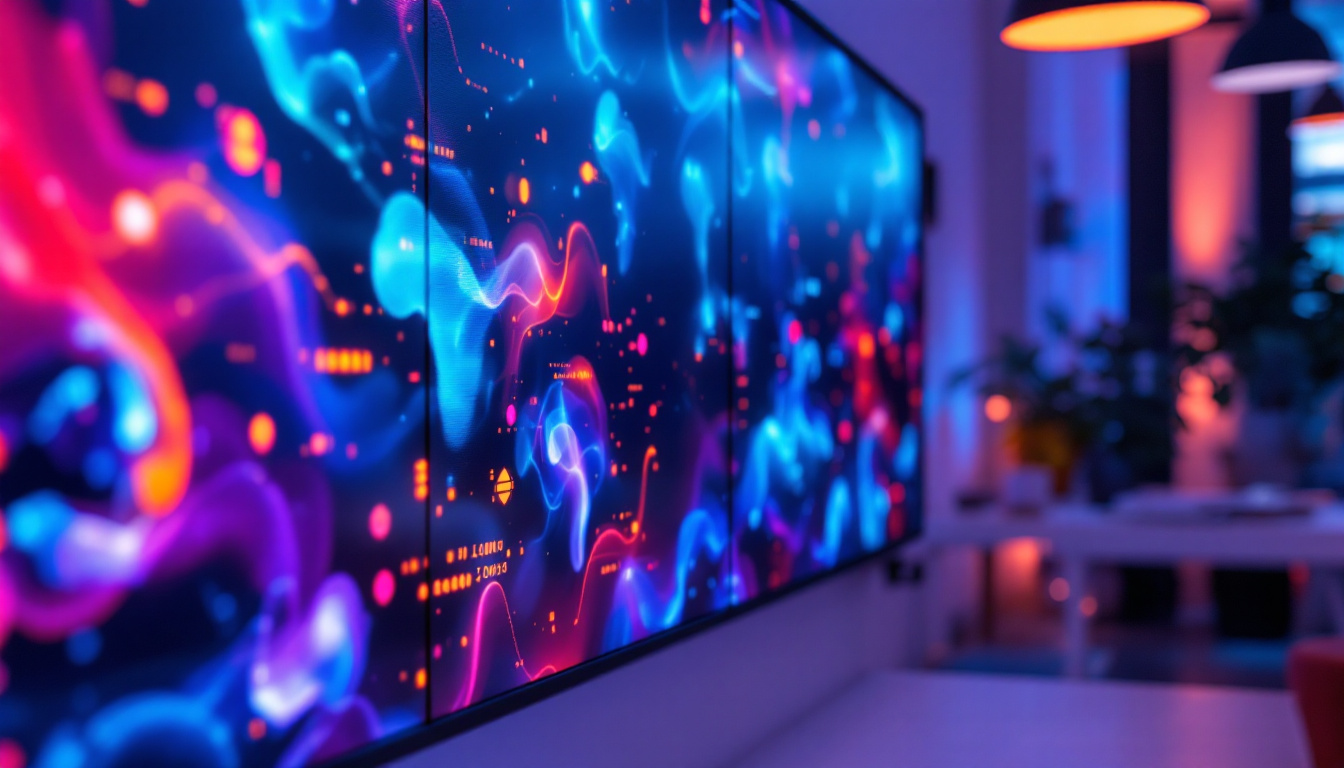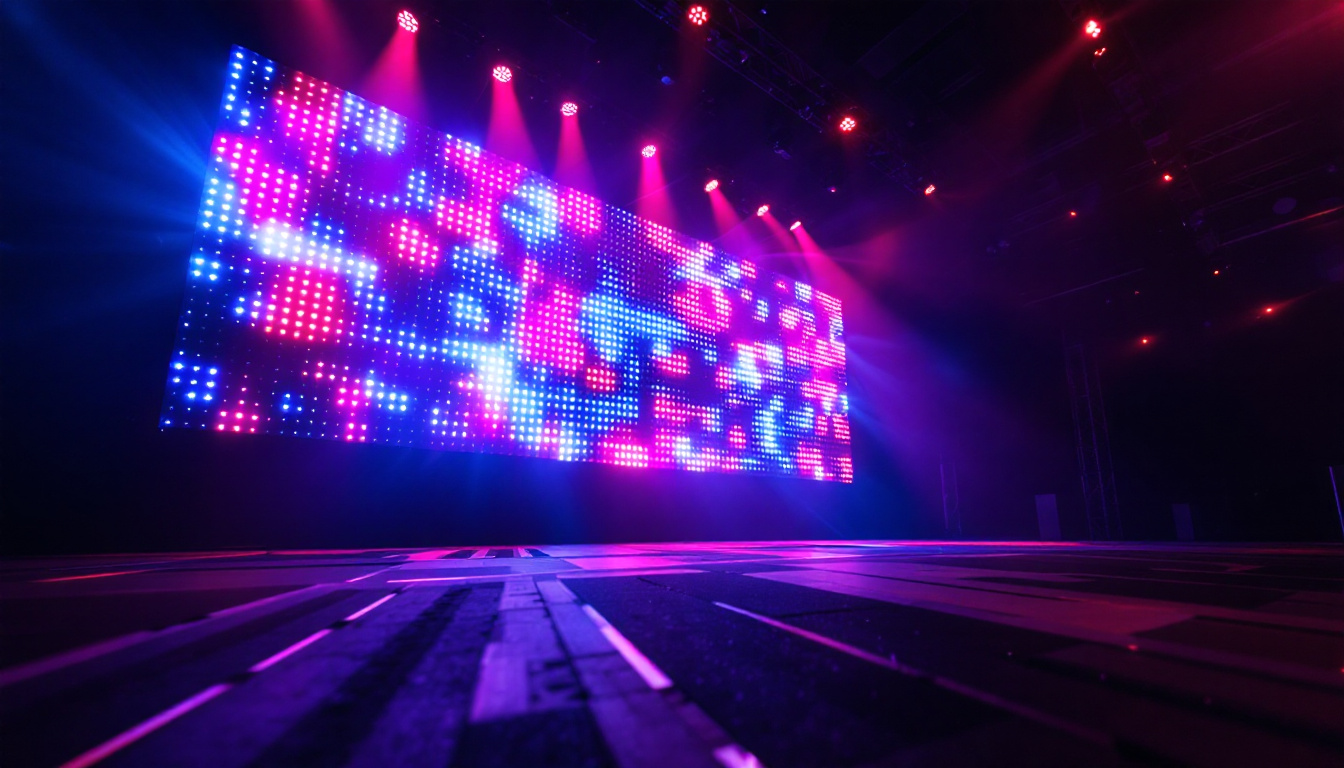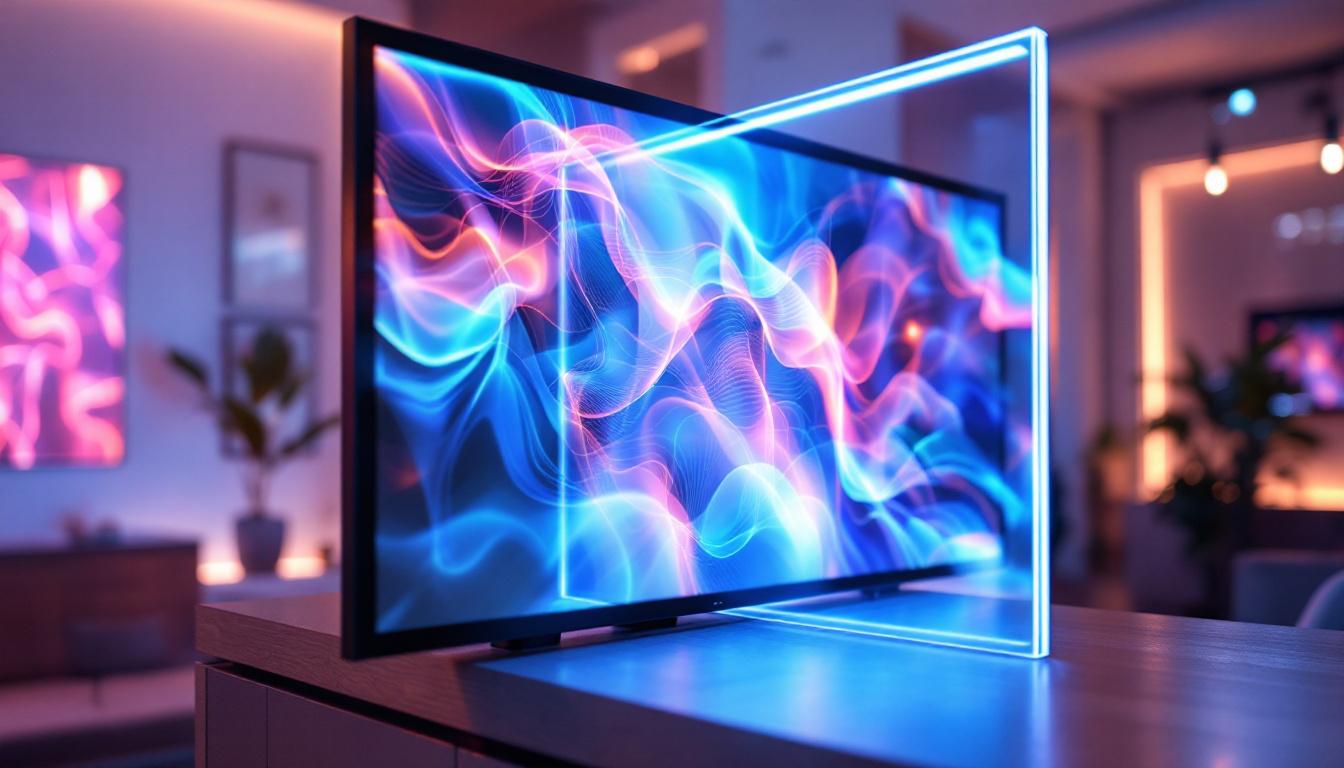In today’s digital age, the demand for larger, high-quality displays has surged, leading to the widespread adoption of huge monitor screens. Among the various technologies available, LED displays have emerged as a favorite for both personal and professional use. This article delves into the intricacies of LED displays, their advantages, and their applications, providing a comprehensive understanding of why they have become the go-to choice for many users.
Understanding LED Technology
LED, or Light Emitting Diode, technology has revolutionized the way we perceive visual content. Unlike traditional LCD screens that rely on backlighting, LED displays utilize an array of tiny diodes to produce light. This fundamental difference not only enhances the brightness and contrast of the images displayed but also contributes to the overall efficiency of the screen.
How LED Displays Work
At the core of an LED display are the individual diodes that emit light when an electric current passes through them. These diodes can be arranged in various configurations, with the most common being RGB (Red, Green, Blue) combinations. By adjusting the intensity of each color, LED displays can produce a wide spectrum of colors, resulting in vibrant and lifelike images.
There are primarily two types of LED displays: Direct LED and Edge-Lit LED. Direct LED displays have diodes placed directly behind the screen, providing uniform lighting. In contrast, Edge-Lit LED displays have diodes positioned along the edges, using light guides to illuminate the screen. Each type has its pros and cons, influencing the overall viewing experience.
Types of LED Displays
LED displays can be categorized into several types, each designed for specific applications. The most common types include:
- Standard LED Displays: These are widely used in televisions and computer monitors, providing excellent color accuracy and brightness.
- OLED Displays: Organic Light Emitting Diodes offer deeper blacks and better contrast ratios, making them ideal for high-end televisions.
- Mini LED and Micro LED: These advanced technologies provide even greater control over lighting, enhancing picture quality and reducing blooming effects.
Advantages of Huge LED Monitors
The appeal of huge LED monitors lies in their numerous advantages, which make them suitable for a variety of uses, from gaming to professional presentations. Understanding these benefits can help consumers make informed decisions when selecting a display.
Enhanced Picture Quality
One of the standout features of LED displays is their exceptional picture quality. With higher brightness levels and improved contrast ratios, LED monitors deliver sharper images and more vivid colors. This is particularly beneficial for activities that require precision, such as graphic design or video editing.
Moreover, the fast response times associated with LED technology reduce motion blur, making these displays ideal for gaming and fast-paced video content. Users can enjoy a smoother viewing experience without the distractions of lag or ghosting.
Energy Efficiency
LED displays are known for their energy efficiency compared to traditional LCD or plasma screens. The use of diodes allows for lower power consumption, which not only reduces electricity bills but also contributes to a smaller carbon footprint. This efficiency is particularly appealing for businesses looking to minimize operational costs.
Additionally, many LED monitors come with features such as automatic brightness adjustment, which further enhances energy savings by adapting to ambient lighting conditions.
Longevity and Durability
LED displays are designed to last longer than their counterparts. The solid-state nature of diodes means they are less prone to burn-in and other forms of degradation that can affect traditional displays. As a result, users can expect their LED monitors to provide consistent performance over time, making them a wise investment.
Applications of Huge LED Displays
The versatility of huge LED displays allows them to be utilized in various settings, each benefiting from the unique features of the technology. From entertainment to corporate environments, LED displays have found their place in numerous applications.
Entertainment and Gaming
In the realm of entertainment, huge LED monitors have become a staple in home theaters and gaming setups. Their ability to produce vibrant colors and deep contrasts creates an immersive viewing experience that enhances movies and games alike. High refresh rates and low input lag further elevate the gaming experience, allowing players to react swiftly and accurately.
Moreover, the large screen size makes these displays ideal for social gatherings, where multiple viewers can enjoy content without compromising on quality. The visual impact of a huge LED screen can transform any movie night or gaming session into an event.
Business and Professional Use
In corporate settings, huge LED displays are increasingly used for presentations, video conferencing, and digital signage. Their clarity and brightness ensure that content is easily visible to large audiences, making them an effective tool for communication and collaboration.
Additionally, many businesses leverage LED displays for advertising purposes. The vibrant colors and dynamic content capabilities allow companies to capture attention and convey messages effectively, whether in retail spaces or at trade shows.
Education and Training
Educational institutions have also embraced huge LED displays for classrooms and auditoriums. These screens facilitate interactive learning experiences, enabling educators to present multimedia content in a visually engaging manner. The ability to display detailed graphics and videos enhances the learning process, making complex subjects more accessible to students.
Furthermore, during training sessions, large LED monitors can be used to showcase simulations and demonstrations, ensuring that all participants can view the material clearly, regardless of their seating position.
Choosing the Right Huge LED Monitor
With a plethora of options available, selecting the right huge LED monitor can be a daunting task. Several factors should be considered to ensure the chosen display meets specific needs and preferences.
Screen Size and Resolution
The size of the monitor is one of the first considerations. A larger screen provides a more immersive experience, but it is essential to balance size with available space. Additionally, the resolution plays a critical role in picture quality. Higher resolutions, such as 4K or even 8K, offer greater detail and clarity, making them suitable for professional applications where precision is key.
When choosing a resolution, consider the primary use of the monitor. For gaming and casual viewing, a 4K resolution is often sufficient, while professional graphic design may benefit from even higher resolutions.
Refresh Rate and Response Time
For gamers and video enthusiasts, refresh rate and response time are crucial specifications. A higher refresh rate, typically measured in hertz (Hz), results in smoother motion and reduces motion blur. A response time of 5ms or lower is generally recommended for gaming to ensure quick reactions and minimize ghosting effects.
For general use, these factors may be less critical, but they still contribute to the overall viewing experience. A balance between refresh rate and resolution can provide a satisfying experience for various applications.
Connectivity Options
Modern LED monitors come equipped with a range of connectivity options, including HDMI, DisplayPort, and USB-C. It is essential to ensure that the chosen monitor is compatible with existing devices, such as computers, gaming consoles, and streaming devices. Additionally, features like built-in speakers and USB hubs can enhance usability and convenience.
Maintenance and Care for LED Displays
To ensure the longevity and optimal performance of huge LED monitors, proper maintenance and care are essential. Simple practices can significantly extend the lifespan of these displays while maintaining their picture quality.
Cleaning the Screen
Regular cleaning of the screen is vital to prevent dust and fingerprints from accumulating. It is recommended to use a microfiber cloth and a gentle cleaning solution specifically designed for electronics. Avoid using harsh chemicals or abrasive materials, as these can damage the screen’s surface.
Additionally, it is advisable to turn off the monitor before cleaning to avoid any potential damage and to ensure a thorough clean without distractions.
Adjusting Settings for Optimal Performance
Many LED monitors come with built-in settings that allow users to customize brightness, contrast, and color profiles. Taking the time to adjust these settings based on the environment and usage can greatly enhance the viewing experience. For instance, reducing brightness in darker rooms can prevent eye strain, while increasing contrast can improve visibility in bright environments.
Regularly checking for firmware updates is also a good practice, as manufacturers often release updates that can improve performance and fix bugs.
The Future of LED Display Technology
The rapid advancements in LED display technology suggest a bright future for huge monitors. Innovations such as Mini LED and Micro LED are already making waves, offering even better picture quality and efficiency. These technologies promise to deliver displays that are thinner, lighter, and more energy-efficient than ever before.
Emerging Trends
As the demand for larger and more immersive displays continues to grow, trends such as flexible screens and transparent displays are beginning to emerge. These innovations could redefine how LED displays are integrated into various environments, from homes to public spaces.
Furthermore, the integration of smart technology into LED displays is becoming increasingly common. Features such as voice control, built-in streaming services, and connectivity with smart home devices are enhancing user experience and convenience.
Conclusion
Huge LED monitors have transformed the way individuals and businesses interact with visual content. Their superior picture quality, energy efficiency, and versatility make them an attractive option for a wide range of applications. By understanding the technology behind LED displays, their advantages, and how to choose the right monitor, users can make informed decisions that meet their specific needs.
As technology continues to evolve, the future of LED displays looks promising. With ongoing innovations and emerging trends, these monitors are set to become even more integral to our daily lives, enhancing both personal and professional experiences.
Discover the Future of Visual Experience with LumenMatrix
Ready to elevate your visual content to new heights? LumenMatrix is at the forefront of LED display innovation, offering a diverse range of solutions that cater to every need. Whether you’re looking to create a dynamic indoor atmosphere, make a bold statement outdoors, or captivate on the move with vehicle displays, LumenMatrix has the technology to bring your vision to life. Embrace the future of digital signage with our Indoor and Outdoor LED Wall Displays, LED Posters, Sports and Floor LED Displays, Custom configurations, All-in-One solutions, and even LED Transparent Displays. Experience the unparalleled clarity and impact of LumenMatrix displays. Check out LumenMatrix LED Display Solutions today and transform the way you share your message with the world.

